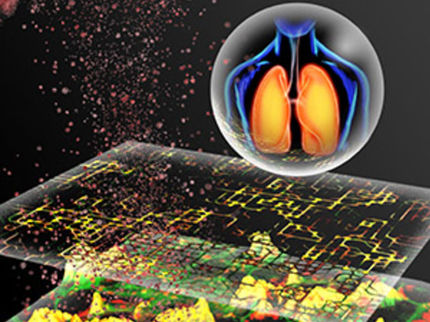Computers outperform lab rats in detecting toxic chemicals
Advertisement
UL, the science safety company, and Johns Hopkins University have embarked on joint research that has resulted in findings that artificial intelligence (AI) is superior in finding toxic substances to traditional animal testing. Beyond being more effective, UL's Cheminformatics REACHAcross™ software computer processing can be performed in a matter of seconds and at a fraction of the cost to traditional testing methods. Working with researchers at the Bloomberg School of Public Health, UL has developed an innovative suite of tools including REACHAcross™ software to predict chemical toxicity that can be used wherever such data is needed.
AI development, like predictive cheminformatics, has been slowly progressing over the last two decades. It was in 1996 that the supercomputer Deep Blue beat chess world champion Gary Kasparov for the first time by using the data from over 700,000 games to learn more than 200 million possible moves. In the infancy of AI, it was estimated that Deep Blue cost more than $12 million.
Today, similar computing power is accessible with far more affordable systems, allowing the use of AI for real-world problems, like predicting toxicity. There are more than 100,000 chemicals in medications and consumer products; for the vast majority; there is very little information about their toxicity. Dr. Thomas Hartung, Chair for Evidence-based Toxicology at Johns Hopkins University, wants "to help end toxicological ignorance", asserting that "we will not succeed if we continue using antiquated methods like animal testing, which has been in use since the beginning of biomedical research." To that end, his group at Johns Hopkins University, led by Tom Luechtefeld, created a database -- not of chess moves - but, of toxicity studies. In 2016, when revealed at The American Association for the Advancement of Science (AAAS), the groundbreaking breadth of the REACHAcross™ software database (with 800,000 toxicological studies for over 10,000 chemicals) created the basis for using Big Data in safety assessments.
In collaboration with UL, the database has expanded to over 70 million chemical structures, containing more than 300,000 biological data points and 20,000 animal data points. Regretfully, the database reflects that many chemicals have been tested multiple times, causing unnecessary loss of animal life. For instance, the six most frequently performed animal toxicity tests comprised over half of all animal testing casualties in Europe in 2011. When the reproducibility of these tests was analyzed, the results also raise strong concerns - when a toxic substance is tested a second time with the same test method, the results will only be repeatable in 70 percent of cases.
UL Cheminformatics, however, processes an untested chemical by identifying the most similar chemicals in half a second, while performing about 500 million calculations - just like Deep Blue found possible chess moves. The first module in the UL Cheminformatics suite, REACHAcross™ software, utilizes an advanced, predictive algorithm, as well as machine learning, to assess the toxicity of any chemical. By analyzing billions of chemical combinations, REACHAcross™ software can predict potentially harmful health and environmental effects of chemicals, including skin sensitization, acute oral and dermal toxicity, eye and dermal irritation, mutagenicity and acute and chronic aquatic toxicity.
When tested against the REACHAcross™ software prediction tool, toxicity results are reproducible in up to 84 percent of cases and, hence, are more reliable than animal testing. REACHAcross™ software was specifically designed to help companies meet REACH 2018 registration deadlines, which requires that companies register chemicals that they manufacture or import in volumes of 1 to 100 tons per year in Europe. Typically, companies conduct animal testing to fulfill the registration data requirements, which is time-intensive, costly and can pose ethical dilemmas. Now, in addition to having helped companies meet REACH 2018 registration deadlines, the tool provides chemical toxicity software for use during product research and development. Further tool improvements include a technique called Data Fusion, which can use other datapoints, such as damage to the skin, to predict damage to the more sensitive eye. By utilizing this data in new ways, REACHAcross™ software now finds 92 percent of toxic substances - dwarfing the performance of animal testing - while also detecting non-toxic substances.
"Though we have to wait for a formal validation, this finding signals the beginning of the end to animal testing, starting with these very common acute effects," says Carlos Correia, SVP UL Supply Chain and Sustainability. Some US agencies, including the FDA, have already initiated use of REACHAcross™ software as part of the validation process in assuring consumer safety. In the near future, the $3 billion animal testing business could be disrupted by the mere touch of a button on a computer.


























































